Among the winners of this year's Wolf Prize are the chemist Robert Bergman and the physicists Michel Mayor and Didier Cavaloz who discovered the first extrasolar planet around a main sequence star in 1995.
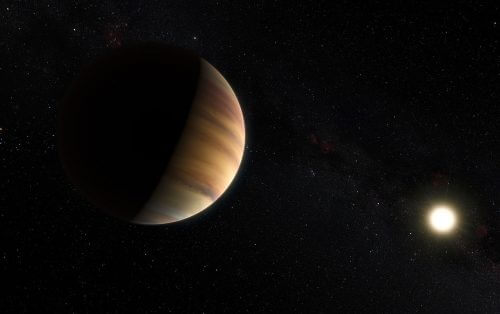
At an event attended by Minister of Education and Chairman of the Wolf Foundation Naftali Bennett, Prof. Dan Shechtman, Chairman of the Board of the Wolf Foundation and winner of the Wolf Prize himself, and the CEO of the Foundation Dr. Liat Ben David, the Wolf Prize winners for 2017 were announced this evening (Tuesday). Five The prizes, amounting to 100 thousand dollars in each field (half a million dollars in total), which will be divided this year between eight winners from two countries: United States and Switzerland. The prize will be awarded to the winners in June in a state ceremony at the Knesset in Jerusalem by the President of the State Reuven Rivlin.
Wolf Prize in Chemistry will be awarded To Prof. Robert Bergman from the University of Berkeley in California, USA for the discovery of the activation reaction (activation) of carbon-hydrogen bonds in hydrocarbons by soluble organo-metallic complexes.
Wolf Prize in Mathematics This year will be divided into two winners: To Prof. Richard Shane from Stanford University in the USA for his contribution in the field of geometric analysis and understanding the interrelationships between partial differential equations and differential geometry.
The second winner is Prof. Charles Pepperman from Princeton University in the USA for his contribution in several fields including complex analysis in several variables, partial differential equations and subelliptic problems.
Wolf Prize in Physics This year it will also be distributed to two winners: Prof. Michel Mayor and Prof. Didier Cavaloz from the University of Geneva in Switzerland for the discovery of an extrasolar planet orbiting a Sun-like star in 1995.
Wolf Prize in Medicine Will be awarded to Prof. James Ellison from the University of Texas in the USA for a revolution in cancer treatment following the discovery of the immune control barrier.
Wolf Prize in the Arts will be awarded this year to two artists: Lori Anderson and Lawrence Weiner, Both from the USA, for being artists whose radicalism and avant-garde is at the heart of their work and is an inspiration to those who come after them.
The Wolf Prize is an Israeli prize that enjoys a very prestigious international reputation. In the fields of exact sciences, he is considered the second most important in the world after the Nobel Prize. In the field of arts, the award is considered the most important. More than a third of the Wolf Prize winners were later crowned as Nobel Prize winners in the field of exact sciences, which coincide with the two prizes (medicine, physics and chemistry). The award is given by the "Wolf Foundation", founded in 1975 by the late Dr. Ricardo Wolf, inventor, diplomat and philanthropist, and his wife, Francisca Sobirna-Wolf, who donated 10 million dollars to establish the fund. Over the years additional amounts were donated to the fund. The rules for awarding the award are fixed in the Wolf Foundation Law, which was approved by the Knesset in 1975.
The reasons for winning
Chemistry 2017
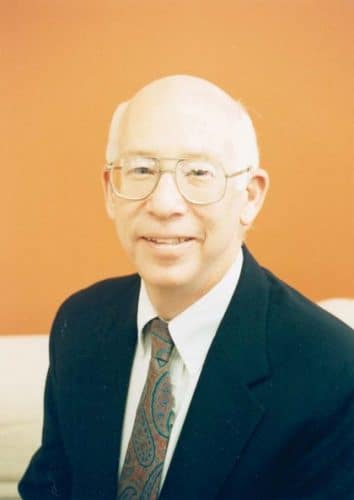
The judging committee of the Wolf Prize in Chemistry for the year 2017 unanimously decided to award the prize To Prof. Robert Bergman from the University of Berkeley in California, USA for the discovery of the activation reaction (activation) of carbon-hydrogen bonds in hydrocarbons by soluble organometallic complexes.
Hydrocarbons, the main components of petroleum (petroleum), are the most available raw materials for the chemical industry and are used to create many important products such as various polymers (plastic products, nylon, etc.). The use of these hydrocarbons is possible through the activation of their carbon-hydrogen bonds. Finding ways to activate these bonds is one of the main challenges in the science of chemistry in recent decades.
In the early XNUMXs, Bergman discovered an organometallic compound (of the rare metal iridium) that was a catalyst for the activation of carbon-hydrogen bonds to form oxidation-addition products. Bergman's discovery excited many and created a new research area in which researchers in academia and industry participate. The topic continues to be a "hot" research topic even today.
Bergman's early work focused on understanding the principles of the activation reaction of carbon-hydrogen bonds. His work showed that the intramolecular oxidizing addition reaction is very general and occurs even with the administration of CH4)- natural gas, the most inert hydrocarbon. Bergman showed that the activation of carbon-hydrogen bonds occurs by a large number of low-valent metals, that the intramolecular reaction is preferred over the intermolecular reaction, that the reaction is reversible, that it can be carried out with asymmetric orientation, and that the reaction can be carried out both thermally and photochemically. More recently, Bergman has developed methods that use the activation of carbon-hydrogen bonds for the synthesis of a large variety of heterocyclic compounds useful, for example, as starting materials for drugs. Bergman's brilliant studies are cited in chemistry textbooks as examples of brilliant and ground-breaking basic mechanistic research.
In addition to his research on the activation of carbon-hydrogen bonds, Bergman is responsible for groundbreaking contributions in other diverse fields of chemistry such as organic-physical chemistry, organometallic and inorganic chemistry, and homogeneous catalysis. Bergman's influence on these fields is enormous and his discoveries form the basis for important developments in broad fields, from the chemistry of fuels (activation of carbon-hydrogen bonds) to medicinal chemistry (the cyclo-aromatization reaction in-diene that he discovered).
Mathematics 2017
The judging committee of the Wolf Prize in Mathematics for the year 2017 unanimously decided to award the prize In equal parts to two mathematicians: Prof. Richard Shane from Stanford University in the USA and Prof. Charles Pepperman from Princeton University in the USA for their impressive contribution to analysis and geometry.
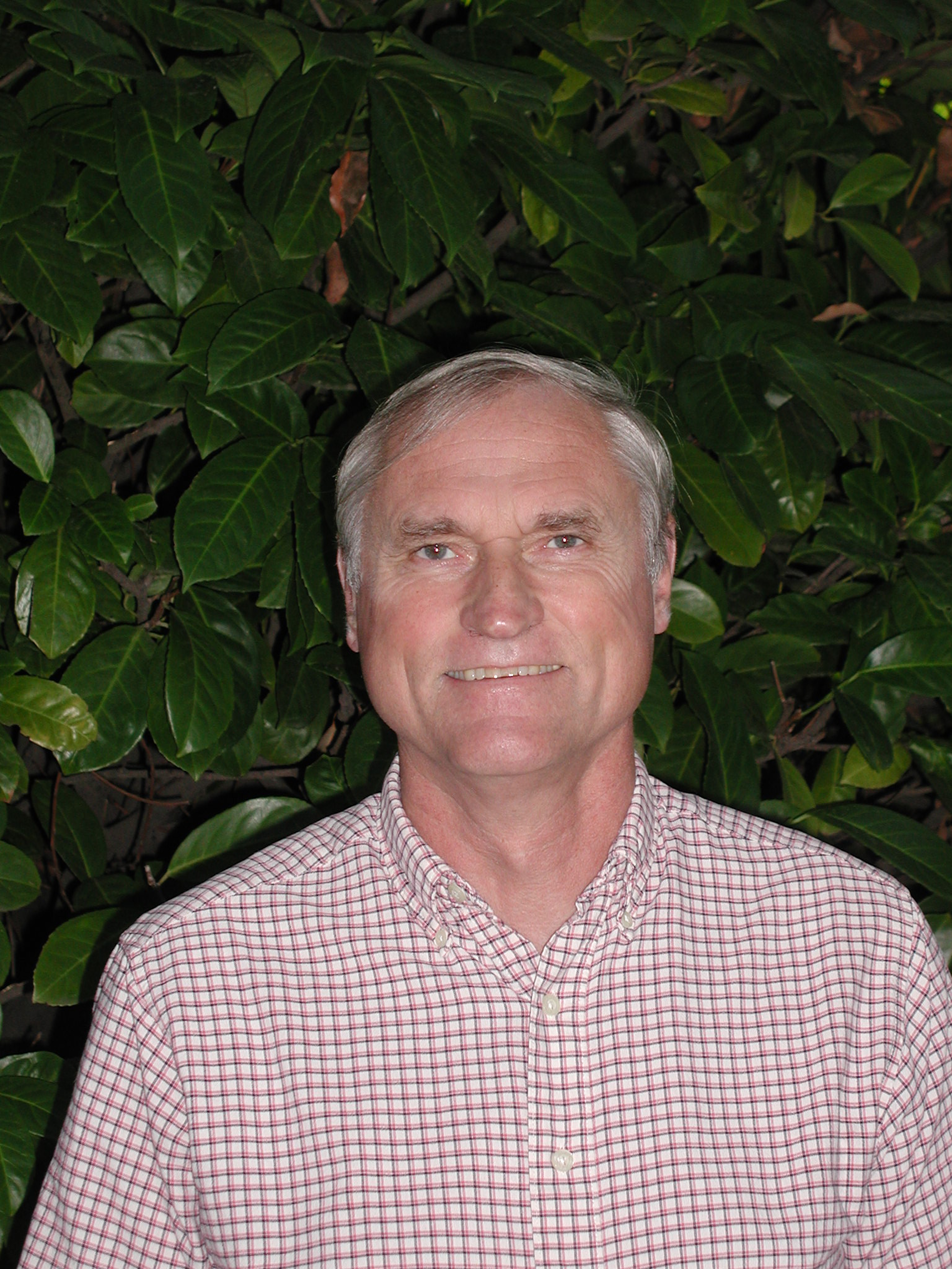
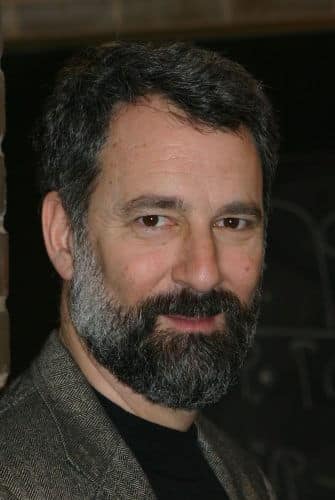
Richard Shane (Richard Schoen) is a pioneer, leader and leveler in geometric analysis. His work on regularity of harmonic copies and minimal surfaces had a lasting impact on the field. His solution to the Yamabe problem is based on the discovery of a deep connection to the theory of general relativity. Through his work on geometric analysis, Shane contributed greatly to our understanding of the interrelationships between partial differential equations and differential geometry. A large number of techniques he developed continue to influence the development of nonlinear analysis today.
Charles Pepperman (Charles Fefferman) contributed a lot to several fields, including complex analysis in several variables, partial differential equations and subelliptic problems. He developed fundamental techniques in harmonic analysis, and applied applications of these techniques in a variety of fields, including fluid dynamics, spectral geometry and mathematical physics. His research had a great impact on questions related to the regularity of classical equations such as the Navier-Stokes equation and the Euler equation. He solved important problems related to the fine structure of solutions to partial differential equations.
Physics 2017
The judging committee of the Wolf Prize in Physics for the year 2017 unanimously decided to award the prize In equal parts to two physicists: Prof. Michel Maior and Prof. Didier Cavaloz from the University of Geneva in Switzerland for the discovery of an extrasolar planet orbiting a Sun-like star.
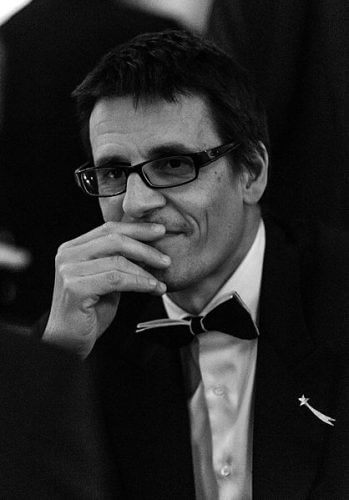
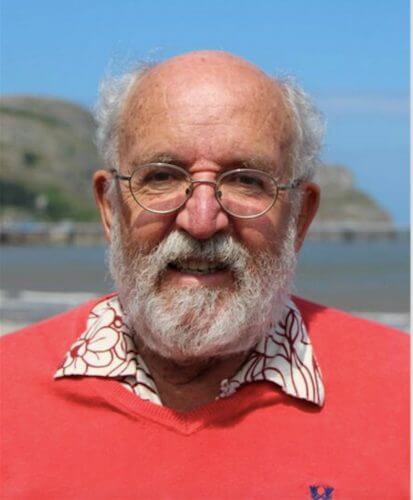
In 1995 Mayor and Queloz discovered the first planet outside our solar system. This planet revolved around a star similar in its properties to the sun and its name: 51 Pegasi b. The discovery is the result of many improvements, over 20 years, that Muir (and at the end of the process also Cavaloz) made in spectrographs that work with the cross-correlation method and allow great precision in measuring the radial velocity of stars.
The discovery of the planet led to a revolution in the theory of planetary systems and this is because the planet, which is similar in mass to the planet Jupiter, completes one revolution around its mother star in 4.2 days, while the time of Jupiter's revolution around the sun is about 12 years. Such a short cycle time is today attributed to the migration of planets in the direction of the mother star in the first stages of the creation of the planetary system.
The discovery of Muir and Cavaloz led to a flood of observations and discoveries of planets near distant stars, which have a huge variety of properties, including elliptical-eccentric orbits that are very different from the circular orbits of the planets in our solar system. The group led by Muir and Cavaloz contributed to the discovery of about 250 more planets, including some that are in multi-planet systems containing up to 7 planets near one star. Thanks to a new spectrograph built by the group at an observatory in Chile, they were able to identify, and statistically characterize, a subset of planets larger than Earth, moving in orbits very close to their parent stars.
Muir also co-discovered the first planet to pass by its star, causing an eclipse, a discovery that opened the door to studying the composition of planets outside the solar system. Cavaloz, Muir and their partners were the first to measure the Rossiter-McLaughlin effect, which allows comparing the inclination angle of the planet's orbit around the parent star, with the star's rotation axis. Additional observations of this type have shown a wide range of angles that cannot be explained simply by the theory of the migration of the planets towards the mother star.
Medicine 2017
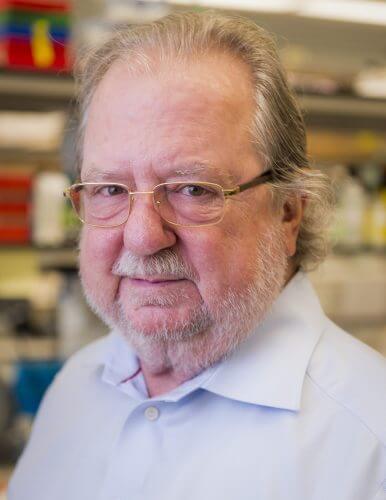
The judging committee of the Wolf Prize in Medicine for the year 2017 unanimously decided to award the prize To Prof. James Allison from the University of Texas, USA for igniting a revolution in cancer treatment following the discovery of the immune control barrier.
Jim Ellison made crucial contributions to our understanding of the immune system; Starting with his early work on the definition of the T cell receptor, he continued with his diagnosis that T cell activation also requires the combination of T cell receptor stimulator receptors. But his greatest achievement is his brilliant insight that the CTLA-4 receptor is a T cell inhibitor; They don't care. Ellison's brilliant insight that blocking the role of T cell inhibitory receptors on T lymphocytes could result in the activation of an antitumor vaccine forever changed the field of immunotherapy, which had suffered from a lack of progress for many years.
In a highly influential series of preclinical studies, Ellison showed that treatment with an antibody to CTLA-4 in melanoma-bearing mice caused impressive tumor regression. Despite skepticism among researchers in the field, Ellison persisted in promoting CTLA-4 immune blockade as a novel form of anticancer immunotherapy. This effort eventually led in 2011 to the development and approval by the FDA of a monoclonal antibody against human CTLA-4, ipilimumab, which led to sustained remissions in some patients with advanced melanoma, with some still alive a decade later. .
Ellison's discovery of an immune barrier also led to FDA approval of drugs that block another inhibitory receptor, PD-1, or its ligand, PDL1. This approach, called a "checkpoint" has led to the activation of a vaccine against many types of cancer. Alison's success stemmed from discoveries in highly innovative basic research, which eventually were successfully translated into innovative medical treatments that saved the lives of many patients with advanced cancer. The appearance of immunotherapy (immunotherapy) as a fourth pillar in the treatment of cancer, along with surgical intervention, radiation, and chemotherapy, was celebrated by the journal Science as the breakthrough of the year 2013.
Art 2017
The judging committee of the Wolf Prize in Art for the year 2017 unanimously decided to award the prize in equal parts to two artists: Lori Anderson and Lawrence Wiener, for being artists whose radicalism and avant-garde is at the heart of their work and is an inspiration to those who come after them.
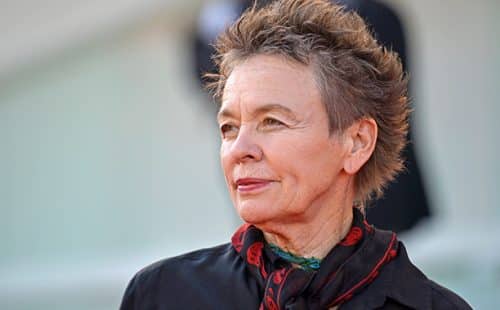
the art of Laurie Anderson (b. 1947) is the clear example of the essence of the multidisciplinary activity as it developed starting from the seventies. Anderson's work exists between music, performance, cinema, poetry and plastic art, while breaking the boundaries that separate different mediums and expanding the range of creation. Anderson paved the way for a new kind of creation, which unites different mediums, new aesthetics and technology. Her character is depicted as a reflection of the spirit of the times - always trying new possibilities, and challenging the existing definitions.
Anderson influenced generations of creators who saw her as a source of inspiration for multidisciplinary, innovative and boundary-breaking creations.
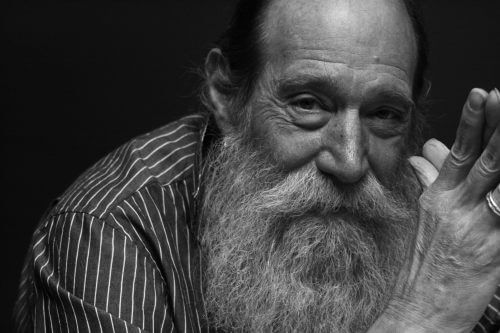
Lawrence Wiener (b. 1942) is one of the central figures in the art world of the last decades. Since 1967 he has been present in the art field as one of the pioneers of conceptual art while making original and unprecedented use of language as a material. The texts he writes produce unexpected sculpture substitutes or painting substitutes on stone, concrete or glass walls, on a transparent or opaque substrate, inside art institutions or on other buildings. Whether his sentences appear within an artistic context or in a broader context of a city or landscape, the texts he formulates have the ability to produce an inspiring performance, with a humanistic charge. The fact that the texts are written not only in English, but also in various local languages, asserts Wiener's accumulated work in a universal dimension with a political core, which does not lose its power over the years, but on the contrary, accumulates more and more sediment.
His unique handwriting, which on the one hand is strongly identified with him and on the other hand is anonymous, preserves the non-material dimension of conceptual art in an art world that is becoming more and more focused on objects. Against this background, Lawrence Weiner's body of work stands out as a marker of radicalism that does not fade away.
The choice In Laurie Anderson and Laurence Wiener As winners of the Wolf Prize in the field of art, it is a choice of artists whose radicalism and avant-garde are at the heart of their work. Their creation stems from a conceptual understanding of art, and from a constant search for the next thing. Choosing them is a statement of faith in art that is not necessarily related to a traditional art object and has an existence outside the temptations and limitations of the art market.
Facts and figures about the Wolf Foundation
- A total of 312 winners of the Wolf Prize, of which 12 are women (5 won in the last two years)
- 26% of the winners in the corresponding fields subsequently won the Nobel
- Oldest winner – Oskar Zaritsky, age 92, Wolf Prize in Mathematics, 1991
- Youngest winner – Gerard Hoft, age 35, winner of the Wolf Prize in Physics, 1981
- Over the years, 21 Israelis have won the award
- The country with the largest number of winners is the USA - 172 winners, followed by Great Britain with 28 winners
- Over the years, 57 won the prize for their contribution in mathematics, 57 in physics, 48 in chemistry, 56 in medicine, 50 in agriculture, 11 in painting/sculpture, 19 in music and 15 in architecture.
